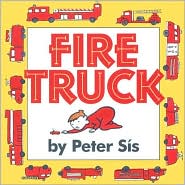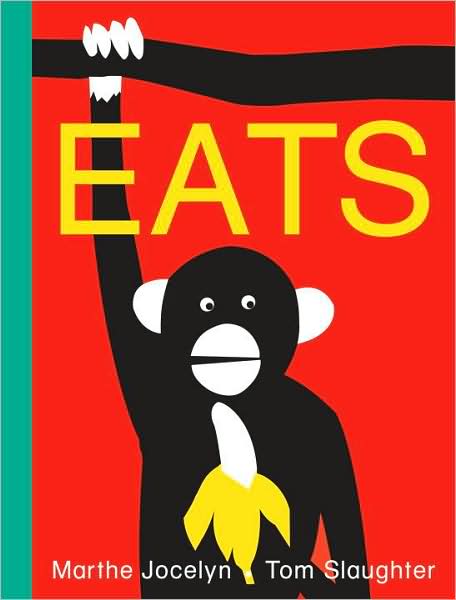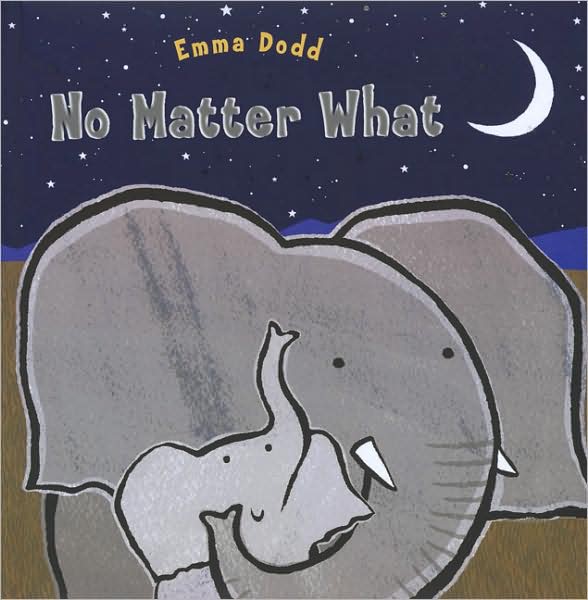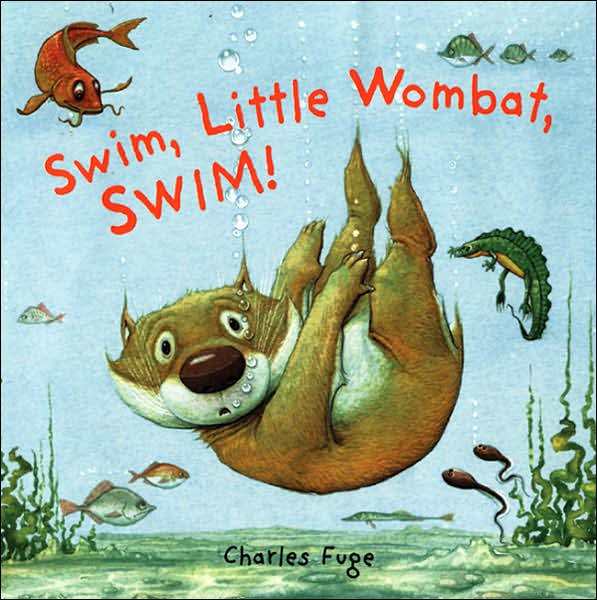Animals Storytime Handout animalhandvocabcarolwagstaffdouglascolplby Carol Wagstaff, Douglas County (CO) Public Library
Junglemania Storytime Handout
Junglemania Storytime Handout: yadkinnchandoutJunglemania by Lynne Reed, Yadkin County (NC) Public Library
Songs
Sing songs in English and in at least one other language during storytime.Early Literacy Aside--Empower: Adults, you can sing anywhere about anything in any language! Singing helps children hear the smaller sounds in words to help them sound out words later. Also many songs have new words for them to learn which will help them know the meanings of words when they get to school.
Randi Kay Stephens, Sacramento (CA) Public Library
Goodnight Moon by Margaret Wise Brown
 Early Literacy Aside--Example: You can use unfamiliar words with your children and model what they mean. For example, you can whisper when reading "whispering" and have your child say a quiet, "hush." This is a simple way to expand the words your children know. Let's try it as we read Goodnight Moon.Read Goodnight Moon by Margaret Wise Brown
Early Literacy Aside--Example: You can use unfamiliar words with your children and model what they mean. For example, you can whisper when reading "whispering" and have your child say a quiet, "hush." This is a simple way to expand the words your children know. Let's try it as we read Goodnight Moon.Read Goodnight Moon by Margaret Wise Brown
Prepositions
Early Literacy Aside--Empower: When you go to play in the park next time with your children, talk about some of the concepts we talked about today--over/under, top/bottom, left/right. The best way for children to learn these concepts is not by memorizing what they mean, but by learning them as they are playing. By helping them learn these concepts, they will later better understand what they read.Natalie Beaver, Sacramento (CA) Public Library
Effective Early Literacy Aside--Video Clip
Video clip explanation and demonstration of ineffective and effective early literacy asides.
Click here
Saroj Ghoting, Early Childhood Literacy Consultant
Cars Galore by Peter Stein
Video clip demonstration of an example early literacy aside emphasizing vocabulary using the book Cars, Galore by Peter Stein.
Click here
Saroj Ghoting, Early Childhood Literacy Consultant
Fill a Tub with Water flannel board
Introduction to flannel board: Let's see what happens when you fill the tub with water. What might we see in the bathtub? Each line starts with "Fill the tub with water, what do you see?" Let's say that together. . . . Good!
Fill the tub with water, what do you see? I see bubbles floating in the bathtub sea. Fill the tub with water, what do you see? I see a washcloth floating in the bathtub sea. Fill the tub with water, what do you see? I see a cake of soap floating in the bathtub sea. Fill the tub with water, what do you see? I see a shampoo bottle floating in the bathtub sea. Fill the tub with water, what do you see? I see a little boat floating in the bathtub sea. Fill the tub with water, what do you see? I see a pouring cup floating in the bathtub sea. Fill the tub with water, what do you see? I see a toy shark floating in the bathtub sea. Fill the tub with water, what do you see? I see some swim goggles floating in the bathtub sea. Fill the tub with water, what do you see? I see a watering can floating in the bathtub sea. Fill the tub with water, what do you see? I see a rubber ducky floating in the bathtub sea. Fill the tub with water, what do you see? I see a nice clean baby splashing in the bathtub sea.
Early Literacy Aside--Empower: Even when you are giving your children a bath, naming the objects, describing them, talking about floating and sinking, heavy and light, as they play with toys in the bath; these are good ways to expand their knowledge and vocabulary which will later help them understand what they read.
by Amy Alapati and Virginia Krute, Montgomery County (MD) Public Library Flannel board pattern: filltubwaterFB
Playing with Directional Words
Early Literacy Aside--Empower: We can help children learn new words as we play with them. In today's storytime we read We're Going on a Bear Hunt which had directional words. Here is a game you can play. Show your child an item (a shoe perhaps) and hide it in a room with a little of it showing. Give your child hints about where to find it using position words like right, left, above, below, and so on. You can also give clues like, "You're getting warmer or colder" as they get closer or farther away. Here is a handout with the game and some activities to support pre-reading skills.
Hickory Dickory Dock with Handout
You can use the figures on the handout as a pattern to make a flannel board. Then use the flannel board as another way to share the rhyme and to play a game.
Introduction: Let's say the rhyme Hickory Dickory Dock Hickory dickory dock The mouse ran up the clock The clock struck one, the mouse ran down. Hickory dickory dock. Repeat using struck two . . . the mouse said "Boo." struck three . . . the mouse said "Whee." struck four . . . the mouse said "No more!" Great! Now let's play a little game on the flannel board. I am going to put the mouse somewhere near the clock and you see if you can tell me where. [Put the mouse on top of the clock.] Where is the mouse? Right! On top of the clock. Repeat with behind, underneath, below, beside or next to, etc.
Early Literacy Aside--Example: When we use words that describe position, you are helping your children understand what the words mean. This will later help them understand what they read. Early Literacy Aside--Empower: Adults, I have a handout here with illustrations for Hickory Dickory Dock. In addition to saying the rhyme together with your children, you can cut out the figures and put the figures in different positions to help your children learn new words and build their vocabulary. Enjoy!
Pop Goes Pre-Reading
Song for Explain Early Literacy Aside:To the tune of Pop Goes the Weasel
Our early literacy skill today
is letter knowledge [fill in the name of the skill].
Getting to know lots of shapes [Substitute aspect of skill being highlighted]
will HELP children read.
Add information related to skill: Researchers have found that children recognize letters according to their shapes. Talking with young children about shapes is one way to support emerging literacy skills.
Some examples for other skills, to fill in:
Skill=vocabulary: Explaining unfamiliar words . . .
Information on skill: Researchers have found that children who have larger vocabularies, who know more words, can more easily recognize words they sound out and can also more easily understand what they read when whey learn to read.
Skill=print motivation . . . Having fun while sharing books
Information on skill: Researchers have found that children who have enjoyable interactions around books and reading are more likely to stick with learning to read even when it is difficult.
Skill=phonological awareness . . . Clapping out the parts of words . . . OR Having fun with rhyming words . . .
Information on skill: Helping children hear the smaller sounds in words will help them later to sound out words when they begin to read.
Skill=print awareness . . . Pointing to signs all around . . . OR Pointing to words in a book Information on skill: Understanding that the written word stands for the words helps children understand how reading works.
Skill=background knowledge . . . Reading information books . . . OR Telling your children what you know . . .
Information on skill: Children are naturally curious. By adding to the information they know on topics that interest them, they will later be able to better understand what they read. Skill=background knowledge . . . Having children retell stories . . .
Information on skill: When children retell stories they learn how stories work, that the have a beginning, a middle, and an end. This will help them later when they have to write stories in school.
Choose only one skill to highlight (to say the aside).
Videoclip of Explain Aside Using Host Puppet
To view a videoclip of using a host puppet to convey early literacy information in the Explain Aside during storytime, click here.
Adult/Child Animal Flannel Board
Introduction: Our next activity is with animals and what they are called. Baby animals are often called something different from the adult animal. This activity helps your children learn these words.[Put up adult and baby animal figures as you say their names, having children repeat them with you. If you like you can pass out the baby animals to each child. You put up the adult animal and the child puts up the matching baby animal as you say the name of it. Have children repeat the words for both adult and baby animals. Encourage adult to help if needed.]
Early Literacy Aside--Example: Saying the words for both the adult and baby animals helps to develop your children’s vocabulary.
Early Literacy Aside--Empower: Today you saw how we can expand children's vocabulary by giving specific names to things. We did it with animals. You can do the same with the vehicles you see all around you. If your child is calling everything that goes a car, you can say, yes, that’s a car, that’s an SUV, that’s a van, that’s a pick-up truck, and so forth. Even if they can’t say all these words, hearing you say them is how they begin to learn these words. You can also add description, like that shiny yellow car with silver hubcaps. These little things you do throughout the day in enjoyable ways all build your child's vocabulary which later helps them understand what they read.
Fire Truck by Peter Sis

Introduction: This book Fire Truck, written and illustrated by Peter Sis, has lots of interesting words in it.
Early Literacy Aside--Example: Listen to the many different words your child is hearing, words we might be using in everyday conversation. Because books have three times as many rare words as we use in conversation, it is important for children to hear the language of books. As I'm reading this book, just hold up a finger when you hear a word you would not be using everyday when talking with your child. Then we'll see how many you heard at the end of the book.
Read the book. Ask how many words they heard that they would not use in conversation with their children.
Early Literacy Aside--Empower: As you read books at home with your children, you may notice some words they are not familiar with. You don't have to explain every unfamiliar word, but you might choose one to point out and explain. Don't replace unfamiliar words, or they won't hear them. This is how you help their vocabularies grow!
Big Chickens Go To Town by Leslie Helakoski

Introduction to book: Our next book is Big Chickens Go to Town by Leslie Helakoski. There are a couple of other Big Chicken books and I think they are very funny. See what you think.
Read the book taking your cue for voice expression from the pictures.
Early Literacy Aside--Example (for Vocabulary): This book has so many interesting words. Use them all, like "the chickens bawled, squalled and caterwauled." This is how your child's vocabulary will grow. Even if they (or you) don't understand every word, you can get the idea from the story itself. That's one of the wonderful things about books, they have so many interesting words.
Early Literacy Aside--Example (for Phonological Awareness): This book has many rhyming words. [Demonstrate with one page. For example, reread the page that starts Shouting voices wobbled.] Wobbled rhymes with bobbled. Flumped rhymes with bumped and rushed rhymes with crushed. Let's think of some other words that rhyme with crushed. They don't even have to make sense. (mushed, brushed, zushed) Pointing out and making rhyming words helps to develop one of the early literacy skills called phonological awareness--hearing the smaller sounds in words. This will later help your child sound out words when they learn to read.
Choose only one skill to highlight (to say the aside).
Eats by Marthe Jocelyn

Introduce book: Our next book is Eats by Marthe Jocelyn and Tom Slaughter. You will see that they use very stark and bright colors, making it easy for young children to see the pictures. There are just two words on a page, the animal and what it eats. Children let's see what the animal is right on the cover. A monkey! and he is eating a banana. Yummy!
Read the book. Point to some of the words as you read them.
Early Literacy Aside--Example (for Print Awareness): You may have noticed when I read the book that I not only pointed to the pictures but also to the words. The words are so distinct. It is as if they are part of the artwork. Pointing to the words as well as the pictures helps your child focus on the print. They can see that pictures and words represent real things, part of print awareness, one of the early literacy skills that will later help them to read.
For Vocabulary: Read the book. Add some more information as you talk about the pictures. Fore example: Bees like to eat nectar. See the black and yellow striped bees? They make a buzzing sound. Let me hear you make a buzzing sound. Good! Nectar is a sweet liquid that flowers have and the bees love to eat it.
Early Literacy Aside--Example (for Vocabulary): Even though there are just one or two words on a page, you may have noticed that I said more than just those words when I read the book. When you read books with your children take time, especially with simple books like this, to add more information to the words on the page. This helps build their vocabulary, learn new words.
Choose only one skill to hightlight (to say the aside).
Spider on the Floor by Raffi

Read Spider on the Floor by Raffi or use the Raffi recording on Singable Songs for the Very Young.You can add verses with less familiar parts of the body.
Activity: Give each child a plastic or rubbery spider. As the song progresses have them put their spiders on the correct body part until it jumps back on the floor. (Shopping for spiders around Halloween is the best time for getting creepy rubbery spiders.)
Early Literacy Aside--Example: Using props during a song or story that prompts children to act out the meaning of the words, provides children with a fun and active way to learn new words and to practice their vocabulary skills.
Submitted by Kathleen Moore, Dayton (OH) Metro Library System
Now Matter What by Emma Dodd
 Earlly Literacy Aside--Explain: Welcome. Today we are going to have stories that have elephants in them. [Show elephant puppet] I am also going to highlight vocabulary as a fun way to help your child get ready to read. The more words they know, the easier it will be for them to understand what they read and also to make sense of words as they sound out words.Early Literacy Aside--Example: Very young children learn the names of things they see or see pictures of, like elephant, flowers, mouse. As they get older they understand words for feelings and concepts like sad, happy, good, bad, big elephant, little elephant. And older still, they understand words for ideas like brave, kind, mean. These are examples of ways you can develop your child's vocabulary daily in a fun way. You can use books to help develop all levels of vocabulary. Listen to some of the words as I read our next book.
Read No Matter What
Early Literacy Aside--Empower: The library has many books with opposites, feelings, and other concepts to help you have fun with vocabulary development with your child. Books from naming items to talking about ideas. Just ask us for some suggestions.
Earlly Literacy Aside--Explain: Welcome. Today we are going to have stories that have elephants in them. [Show elephant puppet] I am also going to highlight vocabulary as a fun way to help your child get ready to read. The more words they know, the easier it will be for them to understand what they read and also to make sense of words as they sound out words.Early Literacy Aside--Example: Very young children learn the names of things they see or see pictures of, like elephant, flowers, mouse. As they get older they understand words for feelings and concepts like sad, happy, good, bad, big elephant, little elephant. And older still, they understand words for ideas like brave, kind, mean. These are examples of ways you can develop your child's vocabulary daily in a fun way. You can use books to help develop all levels of vocabulary. Listen to some of the words as I read our next book.
Read No Matter What
Early Literacy Aside--Empower: The library has many books with opposites, feelings, and other concepts to help you have fun with vocabulary development with your child. Books from naming items to talking about ideas. Just ask us for some suggestions.
Submitted by Jeanenne Robinson, Public Library of Charlotte and Mechlenburg County (NC)
Swim, Little Wombat, Swim by Charles Fuge

Submitted by Larisa Martin, Public Library of Charlotte and Mechlenburg County (NC)
Itsy Bitsy Spider Rhyme
 Early Literacy Aside--Explain: Talking with children as you read books and share rhymes can add to the words they know and to their knowledge if YOU use words they are not familiar with or add information they may not yet know. Both adding to their vocabulary and to their knowledge will help them understand what they read when they learn to read. Say/sing the rhyme with actions:
The itsy bitsy spider went up the waterspout.
Down came the rain and washed the spider out.
Out came the sun and dried up all the rain.
And the itsy bitsy spider climbed up the spout again.
Early Literacy Aside--Example: Here are some examples of the kinds of questions you can ask your children. Then add to what they say to introduce new words and information. [Then you ask the children a couple of questions. Some possibilities are below. Be careful to keep it fun and engaging, not like a test of knowledge.]
Where was the spider going?
What happened when the rain started?
Where do you think spiders live?
Have you seen a spider? Where? What was it doing?
What do you know about spiders?
Early Literacy Aside--Empower: Sometimes we do not know much about some of the topics our children are interested in. We have lots of factual books on a variety of topics like spiders, snakes, dinosaurs, trains, and more. Just let us know what you and your children would like to read about. These books not only make reading enjoyable because yuou are building on your child's interest, you are also setting a good foundation for helping them learn new words and knowledge.
Early Literacy Aside--Explain: Talking with children as you read books and share rhymes can add to the words they know and to their knowledge if YOU use words they are not familiar with or add information they may not yet know. Both adding to their vocabulary and to their knowledge will help them understand what they read when they learn to read. Say/sing the rhyme with actions:
The itsy bitsy spider went up the waterspout.
Down came the rain and washed the spider out.
Out came the sun and dried up all the rain.
And the itsy bitsy spider climbed up the spout again.
Early Literacy Aside--Example: Here are some examples of the kinds of questions you can ask your children. Then add to what they say to introduce new words and information. [Then you ask the children a couple of questions. Some possibilities are below. Be careful to keep it fun and engaging, not like a test of knowledge.]
Where was the spider going?
What happened when the rain started?
Where do you think spiders live?
Have you seen a spider? Where? What was it doing?
What do you know about spiders?
Early Literacy Aside--Empower: Sometimes we do not know much about some of the topics our children are interested in. We have lots of factual books on a variety of topics like spiders, snakes, dinosaurs, trains, and more. Just let us know what you and your children would like to read about. These books not only make reading enjoyable because yuou are building on your child's interest, you are also setting a good foundation for helping them learn new words and knowledge.
Submitted by a library staff person at Public Library of Charlotte and Mechlenburg County (NC)
